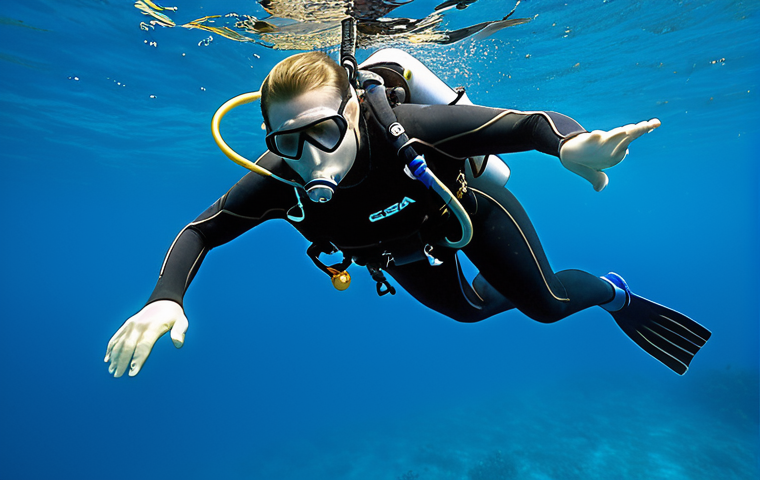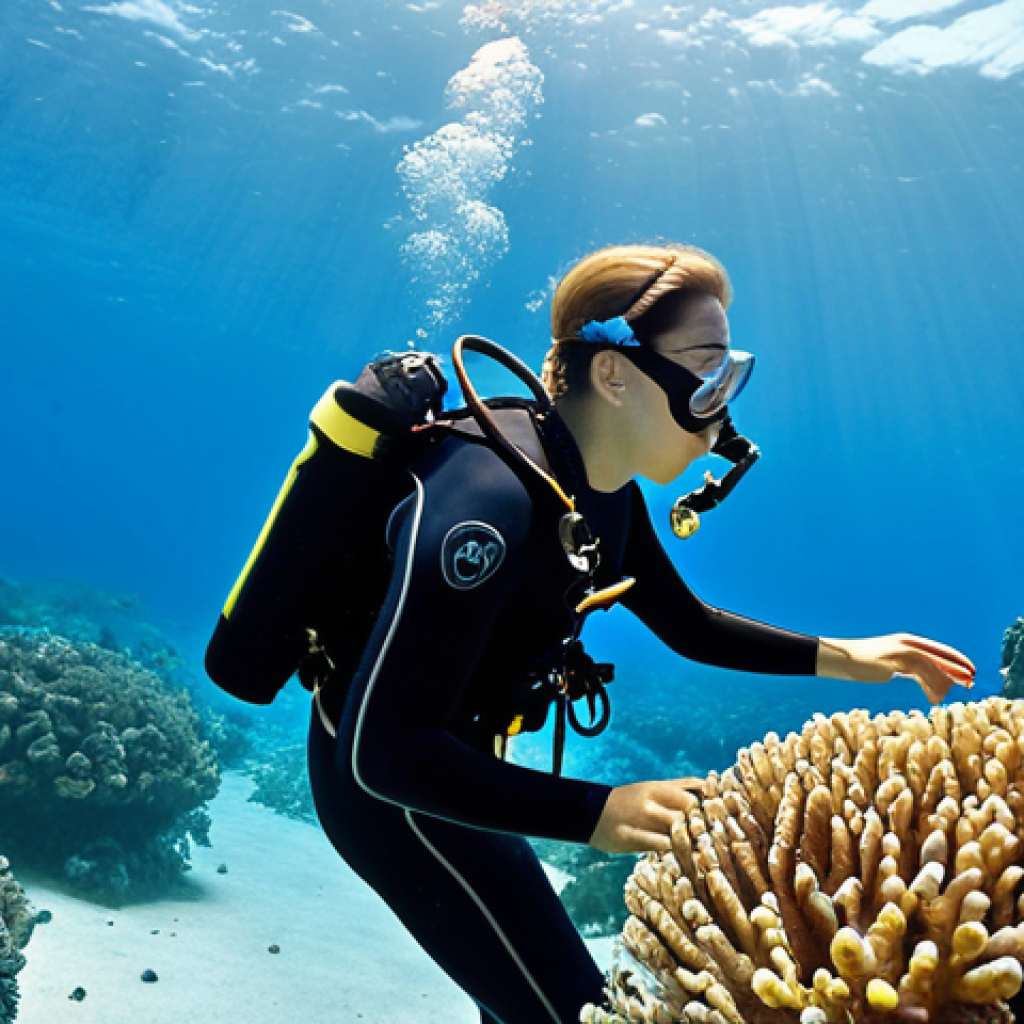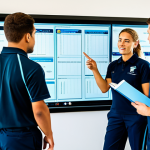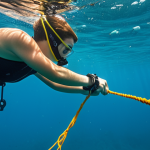So, you’re aiming to ace that diving instructor theory exam, huh? I get it. It’s not just about knowing how to blow bubbles underwater; you need the book smarts to back it up.
From personal experience, I remember feeling completely overwhelmed by the sheer volume of information at first. It felt like every dive table, every physiological concept, and every safety regulation was conspiring to melt my brain!
However, I discovered that the key is to approach it strategically, not just cramming facts. Think about real-world scenarios, how these concepts apply to actual dives, and then everything will come together.
Let’s explore practical tips and tricks to achieve high scores on your diving instructor theory exam below. Let’s get to it and find out more!
Mastering the Fundamentals: Building a Strong Theoretical Foundation

It’s tempting to jump straight into practice dives, but trust me, a solid understanding of the fundamentals is crucial. I remember when I first started learning dive physics, it felt like I was back in high school, wrestling with formulas I hadn’t seen in years.
But once I understood how pressure affects buoyancy and gas absorption, everything else started to click. It wasn’t just about memorizing Boyle’s Law; it was about understanding *why* it matters underwater.
Here’s how to nail those fundamentals:
1. Dive Deep into Dive Physics
Don’t just skim the surface. Understand pressure, buoyancy, gas laws (Boyle’s, Charles’s, Dalton’s, Henry’s – the whole gang!), and how they interact.
Think about real-world examples: Why does your buoyancy change as you descend? How does breathing compressed air affect your nitrogen levels? I found it helpful to draw diagrams and explain the concepts to friends (even if they weren’t divers!).
Teaching someone else is a great way to solidify your own understanding.
2. Decode Dive Physiology
This is where you learn how the human body reacts to the underwater environment. It’s not just about knowing what decompression sickness is; it’s about understanding *why* it happens, how it affects different tissues, and how to prevent it.
I recall a dive trip where one of the divers started showing symptoms of nitrogen narcosis. Because I understood the underlying physiology, I could recognize the signs early and help prevent a potentially dangerous situation.
3. Grasp Dive Equipment and Its Maintenance
Knowing your equipment inside and out is critical. It’s not enough to know how to assemble your regulator; you need to understand how each component works, how to troubleshoot common problems, and how to perform basic maintenance.
I once had a regulator free-flow on a dive, and because I understood the mechanism, I was able to quickly shut it down and switch to my alternate air source.
That experience really hammered home the importance of knowing your gear!
Transforming Study Sessions: From Rote Memorization to Active Learning
We’ve all been there: staring blankly at a textbook, willing the information to magically seep into our brains. But let’s be real, rote memorization rarely works, especially when you need to apply that knowledge in real-world scenarios.
I discovered that active learning is the game-changer. It transforms study sessions from a chore into an engaging and effective process. Here’s my approach:
1. Embrace Scenario-Based Learning
Instead of just memorizing facts, create realistic dive scenarios and apply your knowledge to solve problems. For example: “You’re leading a group of novice divers on a shallow reef dive.
One of the divers panics at 15 feet. What do you do?” This forces you to think on your feet and apply your knowledge in a practical way.
2. Visualize Underwater Situations
Close your eyes and imagine yourself underwater. Picture the effects of pressure, buoyancy, and gas narcosis. Mentally rehearse emergency procedures.
The more vividly you can visualize these situations, the better prepared you’ll be in real life. I used to practice emergency ascents in my mind while waiting for the bus!
Sounds silly, but it really helped.
3. Engage in Peer Teaching
Find a study buddy and take turns teaching each other different topics. Explaining concepts to someone else forces you to clarify your own understanding and identify any gaps in your knowledge.
Plus, it’s a great way to make studying more fun and less isolating.
Leveraging Mock Exams: Fine-Tuning Your Test-Taking Strategies
Think of mock exams as your dress rehearsal for the real show. They’re not just about testing your knowledge; they’re about fine-tuning your test-taking strategies and building confidence.
I made the mistake of skipping mock exams when I first started studying and went into the real thing feeling completely unprepared for the format. Learn from my mistakes!
1. Simulate Exam Conditions
When taking mock exams, create an environment that mimics the actual testing conditions. Find a quiet place, set a timer, and avoid distractions. This will help you get used to the pressure of the real exam.
I even wore the same clothes I planned to wear on test day to make the simulation as realistic as possible.
2. Analyze Your Mistakes
Don’t just focus on the questions you got right; pay even more attention to the ones you got wrong. Understand *why* you made those mistakes and identify any patterns.
Are you consistently struggling with certain topics? Do you tend to rush through calculations? Use this information to refine your study plan.
3. Time Management is Key
Practice pacing yourself during mock exams. Don’t spend too much time on any one question. If you’re stuck, move on and come back to it later.
The goal is to answer as many questions as possible within the allotted time.
Deciphering Dive Tables and Dive Computers: Navigating No-Decompression Limits
Dive tables and dive computers can seem intimidating at first, but they’re essential tools for safe diving. I remember feeling like I was trying to decipher ancient hieroglyphs when I first encountered dive tables.
But once I understood the underlying principles of decompression theory, they started to make sense. Here’s how to master these crucial skills:
1. Understand the Underlying Principles of Decompression Theory
Before diving into the mechanics of dive tables and computers, make sure you understand the basic principles of decompression theory. Learn about nitrogen absorption and release, tissue compartments, and no-decompression limits.
This will give you a solid foundation for understanding how these tools work.
2. Practice Using Dive Tables with Real-World Scenarios
Don’t just memorize the rules; practice using dive tables to plan dives in different scenarios. Calculate your no-decompression limits for various depths and bottom times.
Plan repetitive dives and understand how to account for residual nitrogen. The more you practice, the more comfortable you’ll become with these tools.
3. Familiarize Yourself with the Features of Dive Computers
Dive computers are powerful tools, but they’re only as good as the user. Familiarize yourself with the features of your dive computer, including its display, alarms, and settings.
Understand how to interpret the information it provides and how to use it to plan safe dives. Here’s a summary of the differences between dive tables and dive computers.
| Feature | Dive Tables | Dive Computers |
|---|---|---|
| Complexity | Manual calculations | Automatic calculations |
| Real-time Adjustments | Limited, pre-planned | Adjusts in real-time |
| Ease of Use | Requires careful planning | More user-friendly |
| Accuracy | Less accurate due to assumptions | More accurate due to real-time data |
| Cost | Lower initial cost | Higher initial cost |
| Training | Requires thorough training | Easier to learn |
Prioritizing Safety Protocols: Recognizing and Responding to Underwater Emergencies
Knowing how to respond to underwater emergencies isn’t just about passing the exam; it’s about saving lives. I remember witnessing a near-drowning incident during a dive trip.
It was a terrifying experience, but because I had practiced emergency procedures, I was able to react quickly and help save the diver’s life. That experience taught me that safety protocols are not just theoretical concepts; they’re essential skills that can make the difference between life and death.
1. Master Emergency Ascent Procedures
Practice emergency ascent procedures, including controlled emergency swimming ascents (CESA) and buoyant emergency ascents. Know when to use each procedure and how to execute them safely.
Remember, practice makes perfect. I used to practice CESA in the pool until I could do it without thinking.
2. Learn How to Manage Out-of-Air Situations
Out-of-air situations are a leading cause of diving accidents. Learn how to donate air to a buddy, how to use an alternate air source, and how to perform an independent emergency ascent.
Practice these skills with your dive buddy until they become second nature.
3. Familiarize Yourself with First Aid Procedures for Diving-Related Injuries
Learn how to recognize and treat common diving-related injuries, such as decompression sickness, arterial gas embolism, and near-drowning. Take a first aid and CPR course and keep your certification up to date.
Knowing how to provide basic medical care can make a huge difference in an emergency situation.
Developing Exceptional Communication and Leadership Skills: Guiding Divers with Confidence
Being a dive instructor isn’t just about technical skills; it’s also about communication and leadership. You need to be able to communicate effectively with divers of all levels, build their confidence, and lead them safely underwater.
I used to be a shy and introverted person, but becoming a dive instructor forced me to step out of my comfort zone and develop my communication skills.
1. Practice Active Listening
Pay attention to what your students are saying, both verbally and nonverbally. Ask clarifying questions and show empathy. Active listening builds trust and helps you understand your students’ needs and concerns.
2. Provide Clear and Concise Instructions
Avoid jargon and technical terms that your students may not understand. Use simple language and break down complex tasks into smaller, more manageable steps.
Visual aids and demonstrations can also be helpful.
3. Lead by Example
Be a role model for your students. Demonstrate safe diving practices, show respect for the marine environment, and maintain a positive attitude. Your actions speak louder than words.
Maintaining Peak Physical and Mental Fitness: Preparing Your Body and Mind for the Demands of Diving
Diving can be physically and mentally demanding, so it’s essential to maintain peak fitness. I learned this the hard way when I pushed myself too hard on a dive trip and ended up with a strained back.
From that moment on, I made it a priority to take care of my body and mind.
1. Engage in Regular Exercise
Focus on cardiovascular fitness, strength training, and flexibility. Swimming, running, cycling, and yoga are all great options. Consult with a healthcare professional to develop a fitness plan that’s right for you.
2. Prioritize Mental Wellness
Stress and anxiety can negatively impact your diving performance. Practice relaxation techniques, such as meditation or deep breathing. Get enough sleep and eat a healthy diet.
If you’re struggling with mental health issues, seek professional help.
3. Stay Hydrated and Avoid Alcohol Before Diving
Dehydration can increase your risk of decompression sickness. Drink plenty of water before, during, and after diving. Avoid alcohol, which can impair your judgment and coordination.
Mastering the fundamentals is a journey, not a sprint. It requires dedication, perseverance, and a willingness to learn from your mistakes. But the rewards are well worth the effort.
Not only will you become a safer and more competent diver, but you’ll also gain a deeper appreciation for the underwater world. So dive in, embrace the challenge, and never stop learning!
Wrapping Up
Becoming a proficient and confident dive professional is a multifaceted journey that combines theoretical knowledge, practical skills, and unwavering dedication to safety. Remember that continuous learning and adaptation are essential in this dynamic field. Embrace the challenges, celebrate the successes, and always prioritize the well-being of yourself and those you guide beneath the waves.
Your commitment to these principles will not only enhance your own diving experience but also contribute to the safety and enjoyment of the entire diving community. Keep exploring, keep learning, and keep inspiring others with your passion for the underwater world.
Helpful Tips to Know
1. Always double-check your gear before each dive. A pre-dive check can prevent many potential issues underwater.
2. Stay current with local diving regulations and guidelines. Understanding the rules of the area helps ensure safe and responsible diving.
3. Consider investing in good-quality dive gear. While more expensive initially, durable equipment can save money and provide better performance in the long run.
4. Network with other divers and instructors. Sharing experiences and knowledge can offer new perspectives and improve your skills.
5. Regularly review and update your emergency skills. Practicing emergency procedures helps maintain your confidence and quick response in critical situations.
Key Takeaways
• A solid understanding of dive physics, physiology, and equipment is fundamental for safe and effective diving.
• Active learning techniques, such as scenario-based training and peer teaching, enhance knowledge retention and practical application.
• Mastering dive tables and dive computers is crucial for planning and executing dives within no-decompression limits.
• Prioritizing safety protocols and developing exceptional communication and leadership skills are essential for guiding divers confidently.
• Maintaining peak physical and mental fitness prepares your body and mind for the demands of diving.
Frequently Asked Questions (FAQ) 📖
Q: How much time should I realistically dedicate to studying each day to effectively prepare for the diving instructor theory exam?
A: Honestly, it’s not just about clocking hours, but making them count. From my experience training instructors, I’d say aiming for 2-3 focused hours a day is a sweet spot.
This allows for solid learning without burning yourself out. Split that time into chunks – maybe an hour on physics, then a break, followed by an hour on dive tables, and then review.
The key is consistency. Short, regular study sessions are far more effective than marathon cramming sessions right before the exam. Treat it like a regular part-time job!
I remember one candidate who aced the exam simply by dedicating his lunch break to studying dive tables every single day for a month. Small, consistent efforts really add up!
Q: What specific study techniques or resources did you find most helpful in mastering the complex concepts covered in the diving instructor theory curriculum?
A: Ditch the idea of just passively reading the textbook! That’s a recipe for glazed-over eyes and zero retention. What worked for me, and I’ve seen work for others, is active recall.
That means forcing yourself to retrieve information from memory. Try flashcards, practice quizzes, or even better, teach the concepts to someone else.
If you can explain Boyle’s Law to your roommate and they actually understand it, you’re golden! Also, don’t underestimate the power of real-world examples.
Picture specific dive situations and how those theoretical concepts apply. For example, instead of just memorizing the formula for calculating air consumption, visualize a dive you did last weekend and calculate how much air you actually used.
Connect the theory to reality! Besides the textbook and PADI materials, I found websites like ScubaBoard and even YouTube videos incredibly helpful for seeing different explanations and perspectives.
Q: Besides simply passing the exam, how can I ensure that I truly understand and retain the theoretical knowledge needed to be a competent and safe diving instructor in real-world scenarios?
A: Passing the exam is just the first hurdle; being a good instructor requires internalizing the material. A big turning point for me was when I stopped seeing the theory as just abstract concepts and started using it to troubleshoot real-world dive problems.
For example, if a student is struggling with buoyancy control, don’t just tell them to add air. Really think about the physics involved – maybe they’re weighting themselves incorrectly, or their breathing technique is off.
Use your knowledge to diagnose the problem and tailor your instruction accordingly. Another thing I learned: keep learning! The field of diving is constantly evolving, with new research and best practices emerging all the time.
Stay updated on the latest advancements and be open to refining your understanding. Attend workshops, read industry publications, and network with other instructors.
And honestly, the more you teach, the deeper your understanding will become. Explaining these concepts to others over and over is a great way to keep the information fresh in your mind.
📚 References
Wikipedia Encyclopedia
구글 검색 결과
구글 검색 결과
구글 검색 결과
구글 검색 결과
구글 검색 결과






